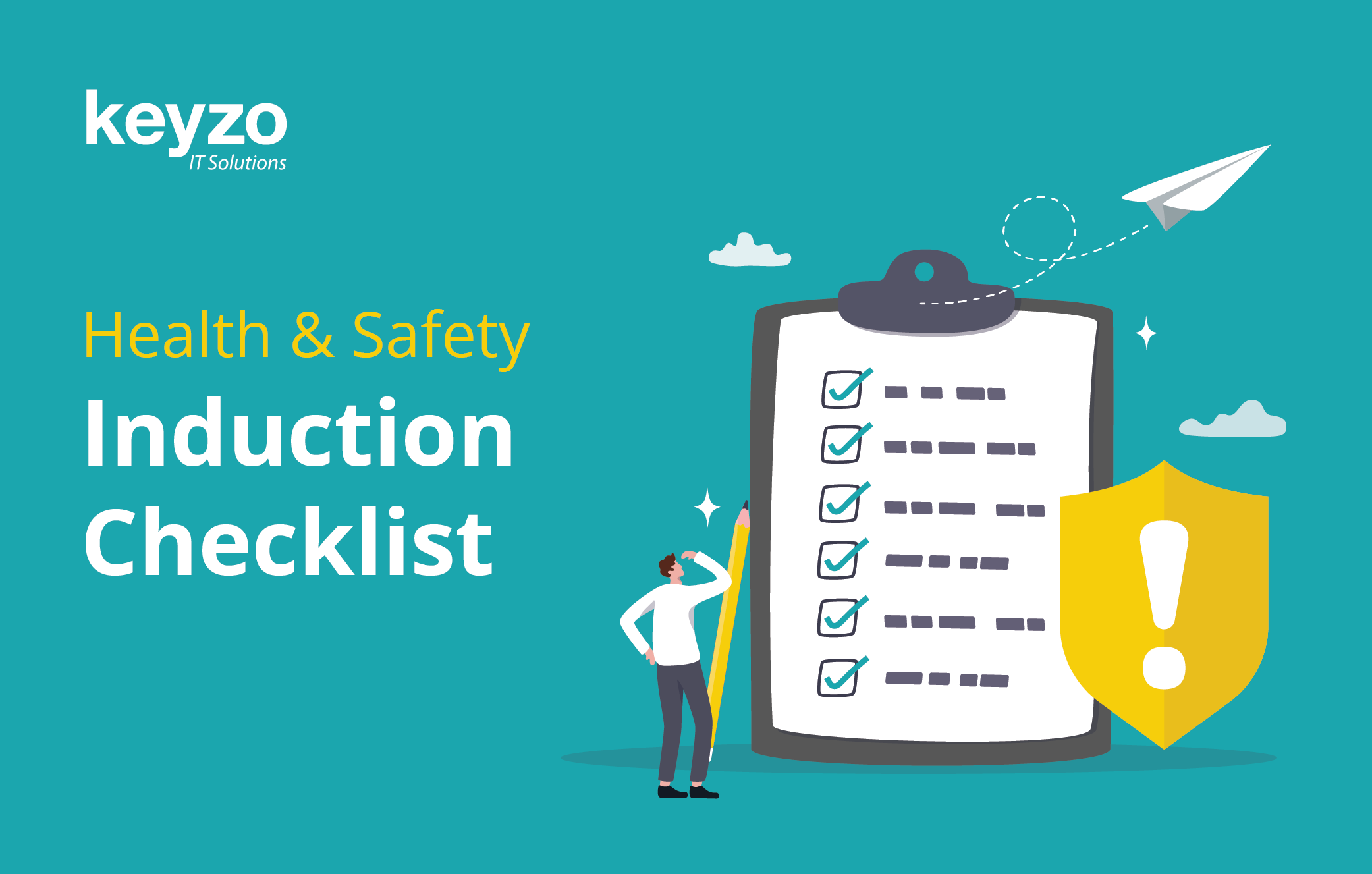
Health and Safety Induction Checklist [Free] 2024
This health and safety induction checklist is designed to help you improve your inductions.
In this post you’ll get an example checklist to use, common mistakes to avoid, practical tips for inductions, and answers to some frequently asked questions.
Do you need a health and safety induction checklist?
A health and safety induction checklist can help ensure all key safety information is covered during onboarding, from emergency procedures to workplace hazards.
They can prevent gaps in knowledge by guiding you through delivering inductions, keeping them consistent and thorough.
Though not compliance proof, an induction checklist can act as a record of training and is a good place to begin when planning your inductions early on.
In many cases, inductions fail because they are either too brief or lack consistency. Although you may successfully complete inductions without a checklist, you will certainly see more consistency after implementing one.
Free health and safety induction checklist
A solid health and safety induction covers essential areas to ensure employees start safely. Key points include legal requirements, workplace hazards, emergency procedures, PPE use, first aid locations, incident reporting, and roles and responsibilities. Covering these basics helps create a safer working environment and ensures compliance from the start.
Download our free checklist
Why health and safety inductions are critical
Health and safety inductions are crucial for creating a safe, compliant workplace. In the UK, the Health and Safety at Work Act 1974 requires employers to provide a safe environment.
A thorough induction checklist helps employees understand hazards, emergency procedures, and their safety responsibilities, reducing the risk of accidents.
Inadequate training can lead to serious consequences. In 2022/23, there were 135 work-related fatalities in the UK.
One construction company faced a £600,000 fine for failing to provide proper safety measures. A solid induction process minimises risks, protects employees, and avoids costly penalties.
The health and safety induction checlist: Step-by-step guide
Creating a solid health and safety induction ensures employees understand their role’s risks. Here’s how to create your checklist effectively:
Pre-Induction Planning
- Identify Role-Specific Risks: Tailor the checklist for each job.
- Assign Responsibilities: Choose who will deliver the induction.
- Prepare Materials: Gather PPE, emergency plans, and resources.
Tip: Consider industry-specific hazards. For instance, construction will have different risks compared to an office.
Customising Content
- General Safety: Cover fire safety, first aid, etc.
- Job-Specific Hazards: Include training on equipment and chemicals.
- Legal Requirements: Regulations like the Health and Safety at Work Act.
Tip: For industries like manufacturing or healthcare, be sure to add hazardous and biological material training, for example COSHH, to your checklist.
Delivery Methods
- Face-to-Face: Ideal for small businesses.
- Virtual: Time and cost efficient, good for consistency and compliance.
- Hybrid: Good for hands-on roles.
Tip: For remote onboarding, ensure staff have access to virtual tools to complete health and safety training. Schedule follow-up sessions if needed to clarify any doubts.
Gather Feedback
- Survey Employees: Get feedback on clarity and gaps.
- Monitor Understanding: Watch how well they apply training.
- Encourage Dialogue: Keep lines open for questions.
Tip: For industries with high employee turnover, such as hospitality, make feedback part of your checklist so that you’re continuously getting insights.
Evaluate and Update
- Incorporate Feedback: Refine based on input.
- Update for New Hazards: Reflect workplace changes.
- Regular Audits: Review periodically to stay compliant.
Tip: For highly regulated industries, consider setting a quarterly or annual review schedule to keep your checklist current.
Common mistakes to avoid in health and safety inductions
Health and safety inductions are key, but common mistakes can reduce their impact. Here’s what to avoid:
- Overloading with Too Much Information
Giving too much info at once can overwhelm employees. Break it into smaller, manageable sections and focus on the essentials. Use written materials, a checklist, or online resources to reinforce key points. - Not Updating the Induction
An outdated induction can miss new regulations or hazards. Regularly review and update the process and your checklist to keep it relevant. - Not Tailoring to Specific Roles
A generic approach misses role-specific risks. Tailor inductions and checklists to address the unique hazards of each position.
Frequently Asked questions
How often should we update our health and safety induction?
Review your induction and checklist at least once a year, or sooner if there are changes in regulations, equipment, or procedures. Regular updates keep it relevant and effective.
Who is responsible for delivering inductions?
Typically, the health and safety manager, HR, or a trained professional handles inductions. Ensure they know the safety policies, have access to the checklist and can clearly communicate them to new employees.
What if an employee doesn’t complete the induction?
If an employee doesn’t complete the induction, follow up quickly. Offer additional training or reminders, and if necessary, consider disciplinary actions for non-compliance.
How long should the induction process take?
It depends on the complexity of the job, but aim for a balance—enough time to cover key points without overwhelming new employees.
Can we deliver the induction online?
Yes, online inductions work well for all industries. Ensure remote employees have access to the right resources and a checklist, and schedule follow-up sessions for clarity.
How can we make inductions more engaging?
Use interactive methods like demonstrations, quizzes, and hands-on training, along with a structure checklist, to help employees retain information better.
Take control of your health and safety inductions
Simplify your health and safety induction process with Induct & Train. It’s designed to help you create, manage, and track inductions effortlessly, ensuring nothing is overlooked and compliance is always met.

